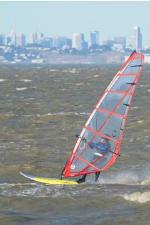Dow & S&P 500 With Sy Harding's (RIP) STS Charts Sy Harding's STS - "Sell in May" Signals for Dow Chart and S&P 500 Chart More about Sy Harding STS MACD timing strategy |
||
|
|
||
| KirkLindstrom.com: Articles
- Quotes
& Inspiration - Portfolio
Performance Full List of Kirk's Favorite charts |
Kirk Lindstrom's Investment Letter Free Sample Issue |
|
|
S&P 500 With Sy Harding's MACD (Scroll down for more chart links) More about Sy Harding from his Obituary:Sy
L. Harding, 80, died on Tuesday, April 21, 2015 at the Florida
Hospital in DeLand, FL, after a sudden illness. Sy was a long-time
resident and business owner in both the NH Lakes Region and Central
Florida. In the early 1980s he started Street Smart Report, which gave
investment advice through newspaper columns and newsletters; he received
numerous awards for his timely information. He authored two books on
the stock market and was about to release his third. When he was not
busy analyzing the stock market, he could be found either on the golf
course, in his wood working shop turning out beautiful carved wooden
bowls, or supporting his children and grandchildren.
|
||
Buy and Sell Signals:
Sy Harding, applied the Moving Average Convergence Divergence
indicator, or MACD, to the Dow after the average best time to leave the
market, April 20, following the "sell in May and Go away"
strategy. Likewise, around the best days on average to enter the
market, October 16, Harding's STS looks for positive MACD to enter the
market again. Top of PageFor example. Sy waits for the MACD to turn positive after October 16, the average best day to enter the stock market based on the "Seasons in the Sun Strategy." Harding writes: The idea is that if a rally is underway when the October 16 calendar date for seasonal entry arrives, as indicated by the MACD indicator, we will enter at that time. However, if the MACD indicator is on a sell signal when the October 16 calendar date arrives, indicating a market decline is underway, it would not make sense to enter before that decline ends, even though the best average calendar entry date has arrived. Instead, our Seasonal Timing Strategy simply waits to enter until MACD gives its next buy signal, indicating that the decline has ended.In the Spring, Harding uses the same MACD indicator to look for the favorable exit point from the market any time after April 20, the average best day to exit the market based on the "Seasons in the Sun Strategy." We use the same method to better pinpoint the end of the market’s favorable period in the spring. If MACD is on a sell signal when the calendar exit day of April 20 arrives, we exit at that point. However, if the technical indicator is on a buy signal, indicating the market is in a rally when April 20 arrives, it makes no sense to exit the market just because the calendar date has arrived. So our Seasonal Timing Strategy’s ‘exit rule’ is to simply remain in the market until MACD triggers its next sell signal indicating the rally has ended. In a nutshell. STS looks for daily MACD to give signals on or after the average best days to enter and leave the market using the seasonal strategy.
Likewise, if MACD is positive on October 16, then you enter the market on that day. If MACD is negative, then you wait for it to turn positive to enter the market.  | ||

